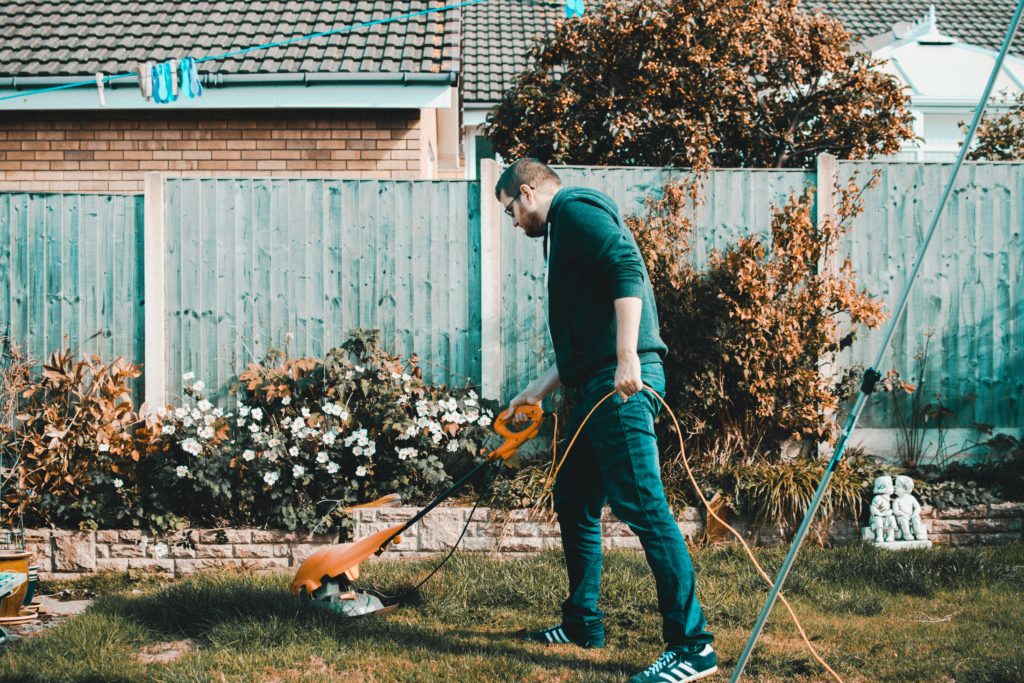
By Ellen Braunstein
A spring clean-up is a necessary first step toward preparing your gardens and lawn for a healthy growing season. We asked Rockville-based landscaping professional Dale Moyers, of Moyers Lawn Service and Landscaping, for advice on what you can do to streamline your outdoor spring cleaning.
He and his siblings, Peggy and Greg, started the business while they were in high school. Their full-service landscaping company has stayed family owned and operated since 1981.
Remove lawn debris. Start by cleaning up the yard, holding off until late February or early March. Winter storms usually leave a messy path of broken branches and sticks in even the best-kept yards.
Break out the rake and clear away leaves, branches, dead grasses, pet litter and clutter. The ground does not have to be 100 percent free of debris, but make sure deep piles of fall leaves are collected that can cause disease to settle in on the grass. With most of the clean-up is done, you can get started on adding new plants to your garden.
Re-edge your flowerbeds and lawn. Lawn edging creates a neat and tidy appearance and helps keep grass and weeds from encroaching into your flower beds, Moyers said. Spades are edging tools that have a smooth, flat blade with flat edges. They are used to cut a clean line between the beds and the lawn.
Apply weed control. Get rid of weeds now before they spread. Moyers recommends applying a pre-emergent herbicide to prevent weeds from germinating and growing. They have no effect on existing weeds. You can also put down a layer of weed-control fabric, which is designed to keep weeds from sprouting up through the soil. Remember to adhere to county and city regulations, available online, that restrict the use of certain pesticides on private lawns.
Apply fresh mulch. Mulch maintains soil moisture and temperature and minimizes weed growth. You want to make sure there’s not too much mulch in the bed. Moyers said you can either remove the old mulch and put down a new layer or you can add just a light layer. You don’t want to have more than a total of three inches of mulch.
Prune and trim to make way for new growth. Prune the shrubs and look for branches that are damaged by cold, snow and wind. Prune back to live stems. Remove dead annuals and prune dead twigs and branches off of any perennials. If you don’t remove dead pieces, they could have a harder time getting proper amounts of sunlight, which can discourage new growth, Moyers said.
Learn which plants should not be pruned in early spring, azaleas, for example. Prune them after they have flowered. Make sure your pruners are clean and sharp.
Reseed damaged areas of the lawn. Examine your lawn and find thin and bare patches that need repair. Overseeding is the planting of grass seed directly into your existing grass while taking care to avoid tearing or damaging the turf, he explained. This closes up bare spots and improves the density of the turf.
Time for the first mow. If the lawn has started to grow, give it a haircut for its first trim of the season, Moyers said. If the weather is too chilly, premature mowing can damage your lawn and the health of the vegetation on it.
Call a professional. A landscaping company can perform a spring cleanup, which can save you time that you can enjoy with the family. They are able to get the job done more efficiently and have the proper tools and experience in pruning and preparing the beds.
Dale Moyers is co-owner of Moyers Lawn Service and Landscaping,
moyerslawnservice.com




